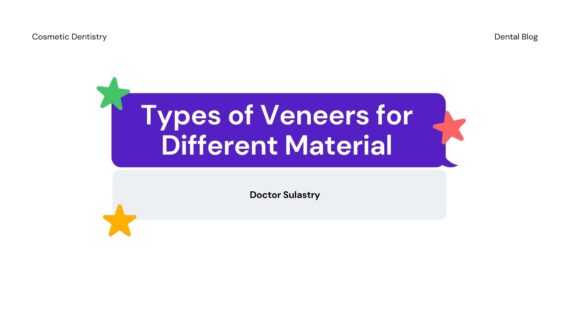Dental veneers are thin layers that stick directly to the front of the tooth to enhance its appearances. And it is the best solution for a number of your minor aesthetic problems. If you want to use veneers, first things that should you know is types of veneers.
If you using veneers, this is will give you a beautiful smile by restoring teeth that are worn, stained, chipped, broken or slightly misaligned. Veneers even to fill in gaps between two teeth. Also to change the shape, color, size and appearance of natural teeth. For your information, dental veneers are custom-made, tooth-colored shells that attach to the front of your teeth.
We also call it as a “smile change.” in cosmetic dentistry.
Also Read What Are Dental Veneers? When Should You Use It?
Different Types of Veneers
Veneers are most often placed over the front teeth, not the rear molars. The shell repairs chipped teeth, teeth of different sizes, slightly crooked teeth, and discolored teeth. Veneers cannot replace missing teeth.
Inlays and onlays are generally better options for restoring back teeth.
Veneers are available in several colors and materials, but whichever material you choose, veneers are designed to be thin, stain resistant, and durable enough to withstand the natural wear and tear your teeth experience every day.
There are several types of veneers to choose from, and all of them have pros and cons
1. Porcelain Veneers
Porcelain is the most aesthetic and least harmful material available for dental restorations. It is also the strongest and most durable of all veneers.
Porcelain laminated veneers are highly biocompatible, which means they rarely injure the gum tissue and surrounding soft tissue in your mouth. This coating can significantly enhance the appearance of your smile because porcelain looks so natural.
Porcelain veneers are a permanent solution and require tooth removal prior to installation.
Pros :
- Pair it with the color of your natural teeth
- Stain resistant
- Very strong and durable
- Reducing the chance of breaking, chipping, or breaking
- Smooth texture like teeth
- Do not damage the gum or surrounding teeth
- Little plaque buildup with proper dental care
- Long lasting, usually 8 to 15 years
Cons :
- It is quite expensive
- Long and invasive procedure
2. Lumineers Veneers
Lumineers is a veneer brand. They are made from an ultra-thin porcelain laminate material and require minimal preparation prior to placement. Unlike porcelain veneers, the less natural tooth structure is removed before applying the lumineer to your tooth enamel.
Lumineers are commonly used to treat teeth that are discolored and irregular in shape. They are smooth to the touch, so they also look and feel natural.
Pros :
- They are reversible
- Require less tooth preparation before placement
Cons :
- Shorter lifespan than traditional veneers
- Looks less natural than veneers
- More prone to breakage and damage
3. Composite Veneers
Composite veneers are made from composite resin which is a mixture of inorganic and organic materials. Natural materials include initiators, resins, and bridging agents. The main inorganic material in composite resin is filler.
The bonding material used to make composite resin veneers is the same as tooth-colored fillings. Although strong, composite veneers are not as durable as porcelain.
Pros :
- Relatively strong and durable
- Less invasive procedure (less removal of enamel)
- They look natural but can stain over time
- Less likely to damage your gum tissue
- Easy to repair if chipped or cracked
- It only takes one visit and no temporary restoration
- Lasts between 5 to 7 years
Cons :
- Weaker and more prone to stain over time than porcelain coatings
- Don’t hang on as long as porcelain veneers
- Long procedure
4. Temporary Veneers
Temporary veneers are used to protect teeth before permanent veneers are designed and attached to teeth. It’s can also be used to cover teeth as a substitute for permanent veneers. This can be done for dental patients who wish to remove the veneers afterwards.
Conclusion
If your oral health is in good condition, this procedure does not require special preparation. If you use temporary veneers, you need to be careful about the foods you eat. Temporary veneers are attached with a weak adhesive and can come off or break if you chew hard food or clean the threads vigorously. They are also very prone to stains, so you should rinse your mouth after eating.
REFERENCES
- https://www.preferreddentalcaresantarosa.com/types-dental-veneer-best-type-veneer-materials/
- https://centreslapointe.com/en/blog/different-types-veneers/
- https://marlboroughdentalcentre.com/blog/Your+Veneer+Guide+3+Different+Types+of+Veneer+Materials+/265
- https://www.newmouth.com/dentistry/cosmetic/veneers/types/

